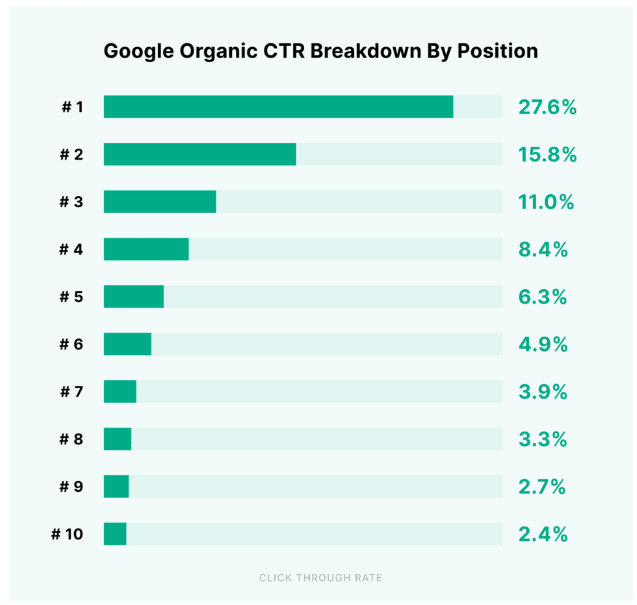When it comes to doing business online, building an effective online strategy is critical for survival and growth. Businesses struggle to stand out in competitive marketplaces, often finding that their digital marketing efforts are fragmented and not delivering the desired results.
This is where the lack of a holistic digital marketing approach comes into play. Each element – be it SEO, content strategy, or social media – seems to operate in its own bubble, leading to disjointed efforts that don’t quite hit the mark. This disjointedness can lead to lost opportunities and an ineffective online presence.
Welcome to our comprehensive guide, ‘The Role of Digital Marketing in Building an Effective Online Strategy’. This article is designed to help you understand the power of a holistic approach to digital marketing, where each element works together like the spokes of a wheel to support one another.
From branding to website design, we’ll show you how to weave these elements together to build an effective and cohesive online strategy. It’s time to make your digital marketing more effective for your business.
- Understanding the elements of digital marketing
- Branding and brand identity
- Website design, user experience (UX) and user interface (UI)
- Conversion rate optimization (CRO)
- Search Engine Optimization (SEO)
- Content strategy
- Paid advertising (PPC and Display Ads)
- Web analytics and data interpretation
- Social media integration
- Email marketing integration
- Video marketing
- Final thoughts on the role of digital marketing strategy in building an effective online strategy
Understanding the elements of digital marketing
Digital marketing is more than just a buzzword; it’s a multifaceted toolkit designed to boost your online presence. The key elements—branding, SEO, content strategy, web analytics, social media, email marketing, paid advertising, and video marketing—all come together to form a holistic digital marketing strategy.
Think of it like an orchestra, each instrument playing its part, contributing to the overall harmony. Similarly, when all elements of digital marketing sync up, you have a robust, omnichannel marketing strategy.
The digital marketing landscape is always changing. To stay ahead, businesses need to constantly adapt their strategies, ensuring their toolkit is always sharp and up-to-date.

Branding and brand identity
Your brand is more than just a name or logo; it’s the essence of who you are as a business, what you offer, and why it matters. It’s your company’s personality and promise that sets you apart online. An effective brand identity extends across logos, colours, typography, and tone of voice, creating a cohesive image that communicates your brand’s unique values and mission.
A strong, consistent brand identity is vital for digital marketing. It’s the foundation of your cross-channel marketing strategy, creating brand awareness and fostering customer loyalty. Consider big names like Apple or Coca-Cola. Their brand identity is so ingrained that just their logo or colour scheme triggers instant recognition.
Studies show consistent branding can increase company growth by 10 to 20%. In other words, the strength of your brand identity directly influences your bottom line.
So, investing in a robust brand identity isn’t just about aesthetics—it’s about nurturing recognition, building trust, and ultimately driving business success. Remember, your brand identity is your company’s face to the world—make sure it’s a face people will remember.
Read our article on the importance of branding and design to learn more.
Website design, user experience (UX) and user interface (UI)
An intuitive website design isn’t just about looking good—it plays a critical role in user engagement and digital marketing. Imagine your website as your digital storefront; it’s often the first touchpoint between you and potential customers. Therefore, a well-designed website with a positive user experience (UX) can significantly enhance user engagement, leading to lower bounce rates and higher conversion rates.
UX is all about how a user interacts with your website. Is it easy to navigate? Is it fast and responsive? Does it offer value? For example, Airbnb’s website is a good example of excellent UI and UX, with its simple navigation, responsive design, and clear, engaging content, contributing to its high user engagement and conversion rates.
Data backs this up too—according to Forrester, a well-designed user interface (UI) could increase a website’s conversion rate by up to 200%, while a better UX design could yield conversion rates by up to 400%. Thus, focusing on UI and UX isn’t just a good idea—it’s a strategic business move.
If you need help with your website’s UX and UI design contact our team for professional wireframing and mockups.

Conversion rate optimization (CRO)
Conversion Rate Optimization (CRO) focuses on fine-tuning your website to turn visitors into customers, effectively boosting business growth and revenue generation.
CRO is not just about tweaking the ‘buy now’ button or adding a catchy headline. It’s a holistic approach, targeting every step of the user journey from arrival to checkout. Key strategies include improving website navigation, simplifying the checkout process, and personalising content to appeal to different audience segments.
The beauty of CRO is that even minor adjustments can make a big difference. For example, Expedia reportedly increased its annual profit by $12 million simply by removing one redundant field from its booking form! It shows that understanding and adapting to your users’ needs can lead to significant rewards.
Remember, the end goal isn’t just to make a sale; it’s to create a seamless, enjoyable user experience that keeps customers coming back for more. So, it’s time to embrace CRO, a pivotal element of an effective digital marketing strategy.

Search Engine Optimization (SEO)
In a saturated and competitive digital marketplace, visibility is everything. That’s where Search Engine Optimization (SEO) steps in, a crucial player in your digital marketing strategy. It’s all about enhancing your website’s visibility in search engine results to drive quality organic traffic your way.
Keep in mind that SEO isn’t a one-size-fits-all approach. It’s a combination of strategies: from keyword research, helping you understand what your potential customers are searching for, to on-page SEO, optimising your website’s content and HTML source code. Off-page SEO, focusing on creating high-quality backlinks, and technical SEO, ensuring search engines can crawl and index your site efficiently.
SEO’s value is evident in the numbers. Research shows a staggering 75% of users don’t venture beyond the first page of search results, highlighting the necessity of a potent SEO strategy. Further, occupying one of the top three spots on Google’s search results captures almost 60% of the traffic. Ranking within the first ten results could make a massive difference, potentially shifting your market share from 3% to a dominating 30%. This puts your business squarely in front of prospective customers.
A study by Backlinko which looked at 4 million Google search results revealed that the number 1 spot in Google search results receives 27.6% of all clicks. The 10th spot only grabs 2.4%.

It’s clear, SEO isn’t just an option; it’s an essential cornerstone for any successful digital marketing strategy.
Content strategy
Online, content is king and a well-developed content strategy reigns supreme. This aspect of digital marketing focuses on planning, creating, distributing, and measuring content that resonates with your audience.
Content isn’t one-dimensional; it spans various formats and platforms, from blog posts and landing pages on your website to videos, podcasts, and social media posts. But it’s not enough to churn out content for content’s sake. The goal is to produce high-quality, relevant, and valuable content that serves your audience, boosts engagement, and enhances SEO.
When content aligns with user search intent, it’s more likely to rank higher in search engine results, which can lead to increased organic traffic. And when visitors find your content valuable, they’re more likely to stick around, boosting engagement rates.
For instance, HubSpot, a leader in the content marketing arena, found that businesses that prioritise blogging are 13 times (13X) more likely to see a positive ROI. They have also leveraged a data-driven content strategy to build authority in their field, proving that effective content marketing is no mere buzzword; it’s a vital element of an effective digital marketing strategy.
Producing well-targeted and engaging content can be hard and time-consuming, Woww can help. Contact us to get assistance with SEO-optimised website content for your business.

Paid advertising (PPC and Display Ads)
Online advertising, particularly Pay Per Click (PPC) and Display Ads, plays an instrumental role in digital marketing. By effectively driving targeted traffic to your website, it fast-tracks conversions and boosts return on investment.
Platforms like Google Ads, Meta Ads (encompassing Facebook, Instagram, and WhatsApp), LinkedIn Ads, and TikTok offer unique opportunities to reach diverse audiences.
Google Ads lets you capture users actively searching for your product or service, while Meta Ads allows you to tap into vast social media networks. LinkedIn Ads, on the other hand, work best for B2B marketing, and TikTok’s visual platform is ideal for engaging younger audiences.
There’s tons of evidence of online advertising’s efficacy. For example, research from Google shows that search ads can increase brand awareness by up to 80%. Similarly, a survey found that 26% of Facebook users who clicked on ads reported making a purchase.
As such, utilising PPC and Display Ads in your digital marketing strategy can create a significant impact on your business’s growth trajectory.

Web analytics and data interpretation
Web analytics and data interpretation are critical for making informed decisions. It’s like a compass, guiding you through the vast online sea and helping you stay on course.
Tools like Google Analytics play a pivotal role, providing valuable insights into website performance and user behaviour. From identifying high-performing content to pinpointing areas for improvement, these tools provide the hard data you need to optimise your online presence.
Consider, for instance, the bounce rate. It’s the percentage of visitors who leave your website after viewing only one page. Depending on the purpose of your page, a high bounce rate may suggest issues with the page loading speed, content quality, or user navigation. By addressing these issues, you can enhance user experience, increase engagement, and ultimately, boost conversions.
Then there’s demographic data, helping you understand who’s visiting your website, their interests, and behaviour patterns. This invaluable information enables you to tailor your marketing strategy and messaging to target audience preferences.
In essence, harnessing web analytics effectively allows you to transform raw data into actionable insights, steering your digital marketing strategy toward success.
Implementing strategies like CRO and web analytics can be a daunting technical challenge. Woww offers professional digital marketing services to help you implement these strategies and much more! Contact our team with your query and our developers will get in touch with you.

Social media integration
Integrating social media into your digital strategy is an effective way to drive traffic, expand your reach, and build an engaged online community.
Think about it: millions of people spend a significant portion of their day on social media. By driving traffic from social media platforms to your website, you’re meeting your audience where they already are. Whether it’s a Facebook ‘share’ button on your blog post, or an Instagram feed showcasing your latest products, this seamless integration amplifies your online presence.
But it’s more than just driving traffic. Social media marketing fosters real, human connections. It’s an interactive platform where customers can engage with your brand on a personal level. They can ask questions, leave reviews, and even share your content with their own followers, increasing your brand’s visibility and credibility.
As an example, we can look at how Adidas uses social media to augment its digital marketing strategy. Instagram posts, like the one below honouring @gerda_steyn, blend product promotion with inspirational narratives, capturing their brand ethos ‘#IMPOSSIBLEISNOTHING.’

Further, they ensure a fluid cross-platform experience by integrating social media links into their website and website links on their socials. The ‘Adidas Runners’ initiative, which they promote on their website and social media channels, showcases their community-building efforts, enhancing their brand image amongst their followers and customers.
This highlights the significant impact social media can have on a brand’s overall digital marketing strategy.
Email marketing integration
Even today, email remains a heavyweight champion. It’s personal, direct, and an excellent tool for lead generation and customer retention. Email marketing, when done right, can yield exceptional returns and nurture meaningful relationships with your audience.
Incorporating email marketing into your website can be as simple as adding a sign-up form on your landing page, or offering a valuable resource or discount in exchange for an email address. This allows you to build a list of potential customers who are interested in what you have to offer.
One tool that can elevate your email marketing strategy is Klaviyo. Klaviyo is an email marketing platform designed for eCommerce businesses. It enables you to create targeted, personalised email campaigns based on customer behaviour, and it integrates seamlessly with your website, helping you track engagement and conversion rates.
Take, for example, Skims, co-founded by Kim Kardashian. They use Klaviyo to send out personalised product recommendations and promotional emails, which helps increase their customer engagement and sales.
So, whether you’re reaching out to new leads or staying in touch with existing customers, integrating email marketing into your digital strategy can bring you closer to your audience, strengthening your online presence.
Contact Woww to get help with social media marketing and email marketing today.

Video marketing
Over the last decade video marketing has grown and emerged as a powerful strategy. Why? It’s simple. Videos are captivating, they deliver information quickly, and are memorable – they’re a marketer’s dream. By incorporating video content into your digital marketing strategy, you can significantly improve engagement and conversions.
Optimising video content for SEO is equally important. Ensuring the right keywords are in your titles, descriptions, and tags can elevate your video’s visibility on platforms like YouTube and in search engine results.
Additionally, statistics underscore the potency of video marketing. Wyzowl research revealed that 89% of customers had been persuaded to purchase a product or a service by watching a video. 79% of customers said the same for software products and apps. Given these figures, it’s clear that an effective digital marketing strategy is incomplete without the inclusion of well-planned and well-executed video marketing.
As such, it’s time to press play on integrating videos into your marketing initiatives. Woww can create high-quality explainer videos for your brand. Watch the video below to learn more and contact us for a quote.

Final thoughts on the role of digital marketing strategy in building an effective online strategy
In conclusion, each element we’ve discussed plays a vital role in crafting a robust digital marketing strategy. From honing your brand identity and improving SEO to optimise your website’s UX/UI, embracing email marketing, integrating social media, and leveraging paid advertising – each facet works in synergy to bolster your online presence. More importantly, a digital marketing strategy isn’t static but continually evolves with the dynamic digital landscape.
If you’re a business owner, it’s essential to adopt this holistic approach, ensuring each digital marketing component isn’t functioning in isolation but as interconnected gears in a well-oiled machine.
If this feels daunting, don’t worry. Woww is here to help you navigate the digital terrain. Contact us today and get a quote so we can start building your comprehensive, effective digital marketing strategy!
If you enjoyed this article, explore more of our guides covering:




